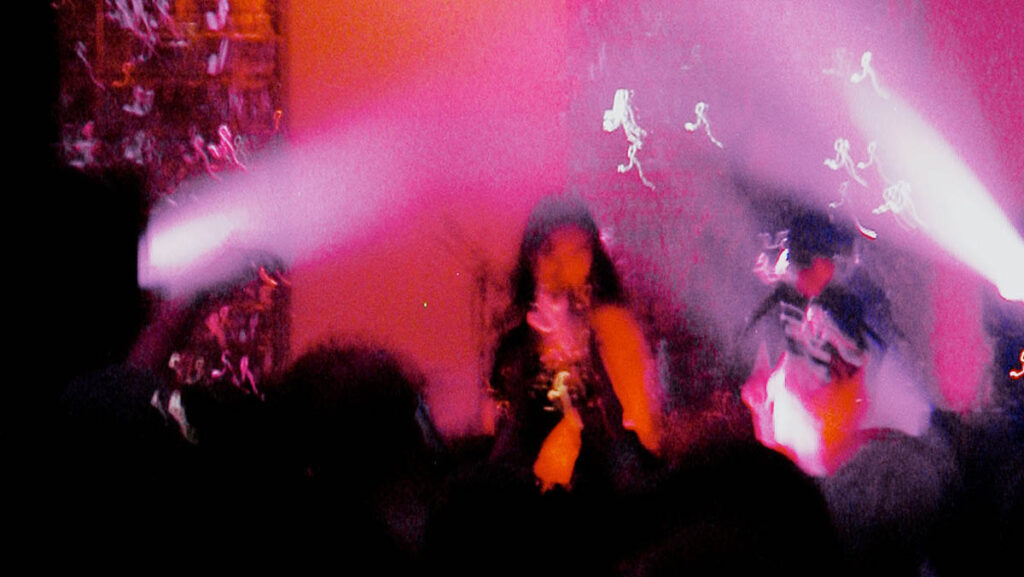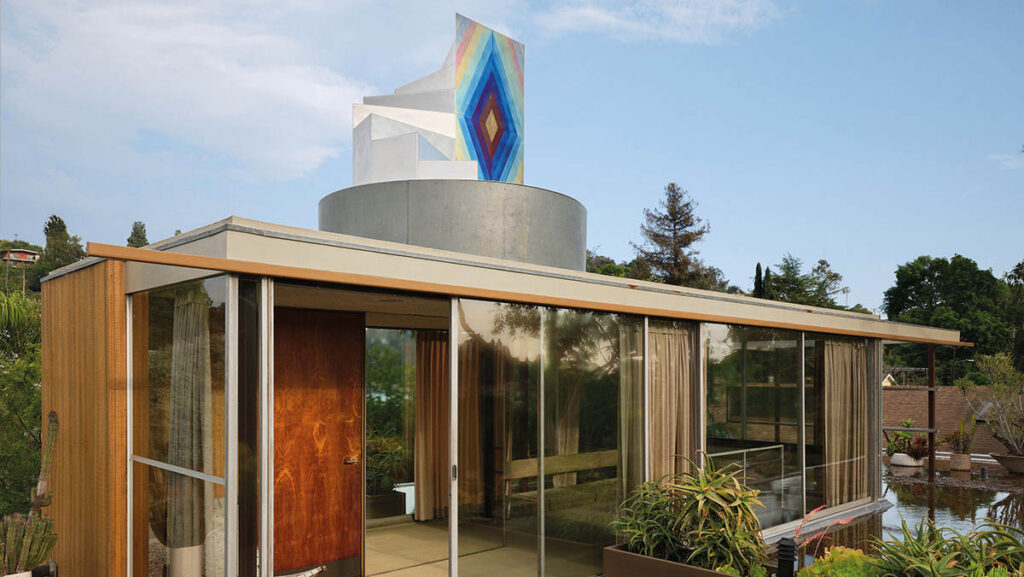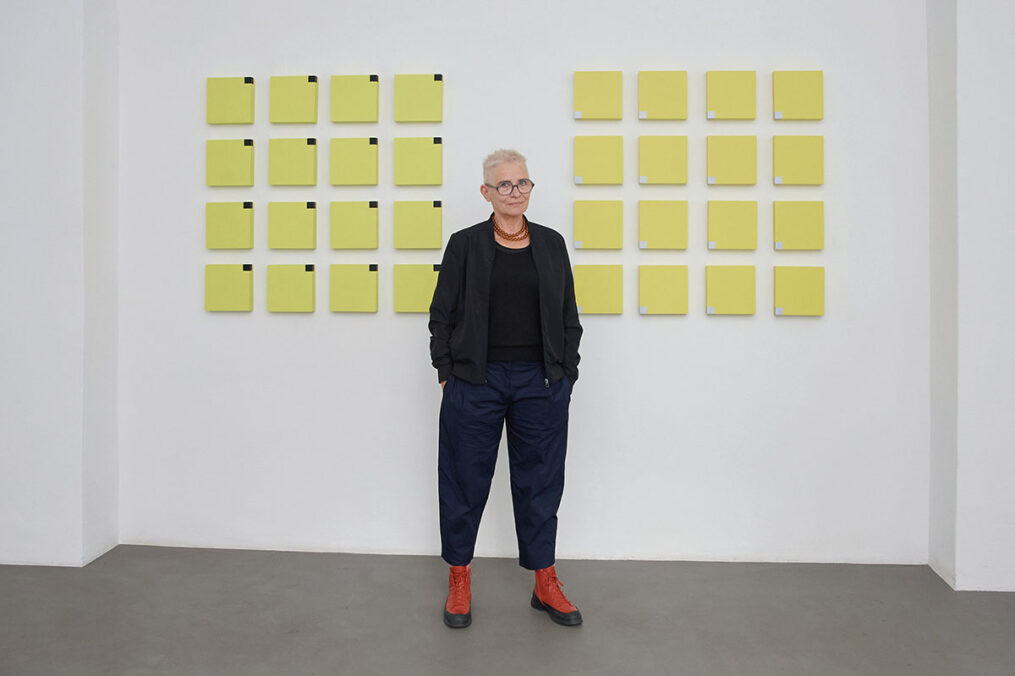
Can you tell us more about your current solo exhibition, “OR,” here at gezwanzig gallery? What was the starting point, and what about its title? The title came about after I realised that my entire story as an artist has to do with games. In a game, there are always several moves to choose from. The title is about decisions, and therefore also about doubts.
The work “Common or Garden” consists of several parts that could be understood as game pieces. They are of equal value, yet each is unique in its way. From a distance, they may appear identical, like people. But when you get closer, you can see the subtle differences. The exhibition is about systems, but also individuality within those systems. It is about structure and play, about repetition and uniqueness. It’s about moving through the space and viewing things from different perspectives. Through my work, I strive to awaken movement—both in the body and in the mind.
The oldest work served as the starting point for the exhibition’s concept. It was bright yellow, and finding complementary tones for the other works proved to be a challenge. I tested many shades before settling on a similar base yellow. The silver of the marker was even trickier. I tried orange, blue, and green—nothing worked until I found silver. I can’t explain why, but it’s part of the process.
I work with acrylic paint on wood, and I also use tape; it creates clean edges that contribute to the geometric structure.

How did you begin working in a more conceptual direction?
I think that has to do with my way of thinking, abstract and logical. I aim to capture the essence of complex relationships; emotion has never been my primary approach to painting. This kind of structuring comes quite close to building a concept. Painting an abstract image or developing a spatial concept feels very similar to me.
Your practice is quite systematic and conceptual. Could you elaborate on how you develop a concept? Are there any set rules?
I usually work in series that follow a system. While working on such a series, something small in the process can catch my attention and lead to a new idea that I then want to explore further. This leads to research material, format, and technique. During this process, I begin to create a system of rules for the next group of works, relating to size, color, repetition, tension, etc.
These specified parameters give me a sense of freedom because, once the structure is clear, I can work playfully within it and explore the boundaries of those rules.

That sounds a lot like mathematics. So, would you say the emotional side of your work lies in how you choose the rules?
I studied mathematics at the same time that I studied art for some time. I was very young, around 18. In the mornings, I attended mathematics lectures. It was a very strict environment: no smiles, very focused. In the afternoons, I went to the art university, where everyone was lounging around with joints and talking about beauty. It was confusing and exciting at the same time. Eventually, I stopped studying mathematics after two years. Mathematics has many rules, but within them, you can find different ways to approach a problem to find a solution. My way of thinking in art is very similar. When I hear someone talk about complex mathematical theories, I feel a deep admiration. It moves me. It’s beautiful how conceptual and abstract their thinking is. This spirit influences my work.
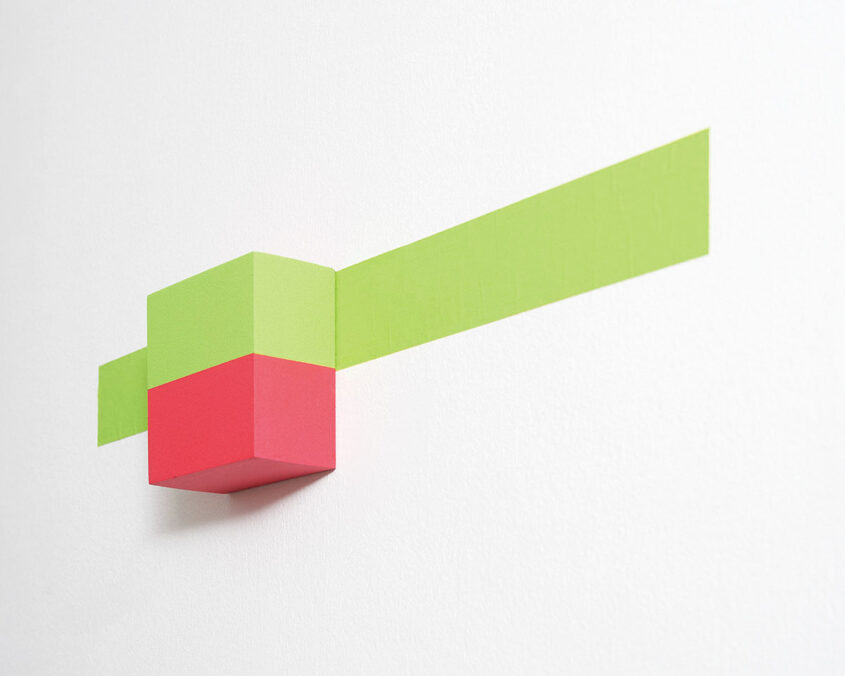
I don’t paint emotions, but of course, the choice of certain colours—e.g., whether to use yellow—is still an emotional decision. Some of the rules are practical and relate to materials used in industrial production. For example, if I buy wooden panels in fixed sizes, I must work with these dimensions determined by someone else. But how many I use, or how I arrange them, is my decision.
How do you feel while working? What does the process of your work look like?
There are several phases in my process. The first phase, developing the concept, is often the hardest. The idea may come quickly, but figuring out how to realize it is complicated. Then I begin to plan: measuring, selecting materials, and finding the proportions. That part can be exhausting. But then comes the phase that involves pure painting or drawing, and that’s meditative. I enjoy it a lot because I can go deep into myself and just focus on the color, the process, and being present.
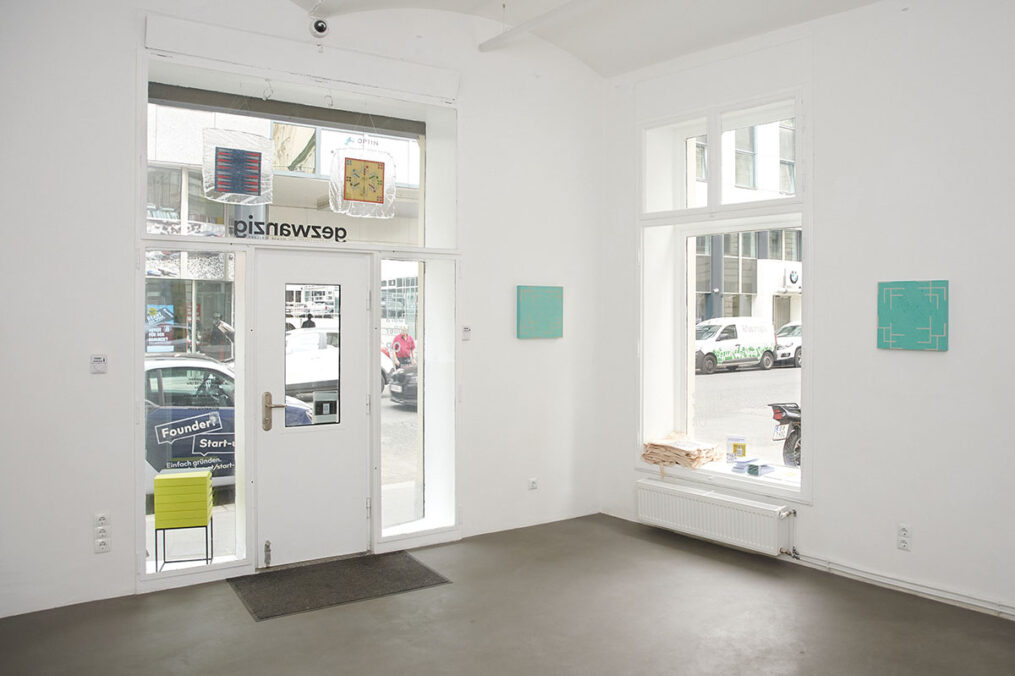
Can you describe your studio routine? What does your workspace look like, and when do you usually work?
My studio is separate from my apartment. I go there every day after breakfast and try to stay the whole day, even if I’m not constantly working on art. I also do administrative work there, including emails, archiving, and social media, everything that’s part of being an artist today.
And you also run a project space nearby, right? Do you ever feel overwhelmed by having to balance everything?
Yes, the project space is called sehsaal. It’s quite close to my studio, and it takes up some energy as well, organizing, curating, and communicating. It’s a big space with a full program, and over the years, my work has also become more prominent in exhibitions, so yes, it can sometimes feel like too much at once. I’m not sure how it will all develop in the future, but for now, I enjoy the rhythm. Balance is something I keep trying to find.
Do you follow a specific numerical logic?
I often work with numbers like two, four, eight, and sixteen, just binary logics. Four is my number. I find it democratic and stable. It allows a lot of variation without chaos. I must say that I am trying to avoid triangles; I find them too hierarchical.

Does that connect to how you arrange works in space in an exhibition, so the space itself becomes one of the rules?
When I prepare for a solo show, the space becomes part of the concept. I need to know the dimensions, the light, and the atmosphere. I might start with one piece and think, what does this work need around it to build a complete exhibition? It’s like composing a system within a space. Knowing where a work will be located helps a lot. It limits the endless possibilities, which I find liberating. It helps me think and decide.
Do you use algorithms in your process?
Sometimes, yes. I might repeat a pattern, like rotating a square or repeating a certain gesture. The outcome is often out of my control. Even if I don’t love a particular piece, I trust the system, and I go for it.
Solo exhibition: Barbara Höller – OR
Exhibition duration: 22.05-11.07.2025
Opening times: Wednesday to Friday: 11 AM-6 PM | Saturday: 11 AM-3 PM
Address and contact:
gezwanzig gallery
Gumpendorfer Straße 20, 1060 Vienna, Austria
www.gezwanzig.com
www.instagram.com/gezwanzig/
Barbara Höller – www.barbarahoeller.at, www.instagram.com/barbara_hoeller
“Lines, surfaces, color, contrasts. In and with her modular work systems and serial grids, Barbara Höller proves in ever new and surprising ways that she has mastered it like hardly any other artist: the exciting play with mathematical principles of order, optical perceptions, and aesthetic minimalisms. Which brings us to the subject of play. Every game is characterized by the fact that it has a strict set of rules. Anyone who disregards the rules, on the other hand, is a spoilsport. Barbara Höller makes use of both. On the one hand, regularity, but also the artistic freedom to keep the rules secret or only hint at them. In her compilation of works, OR, this is expressed on three levels by referring to the aspects of a board game: the playing field, the game pieces, and their moves.” Text by Daniel Zaman
Barbara Höller was born in 1959 in Vienna, Austria. She studied at the University of Applied Arts and the University of Vienna (Mathematics). She received numerous prizes and grants. Since 2016, she has been managing the Sehsaal exhibition space in Vienna. She is actively participating in various artistic, curatorial, and collaborative projects internationally and locally.




